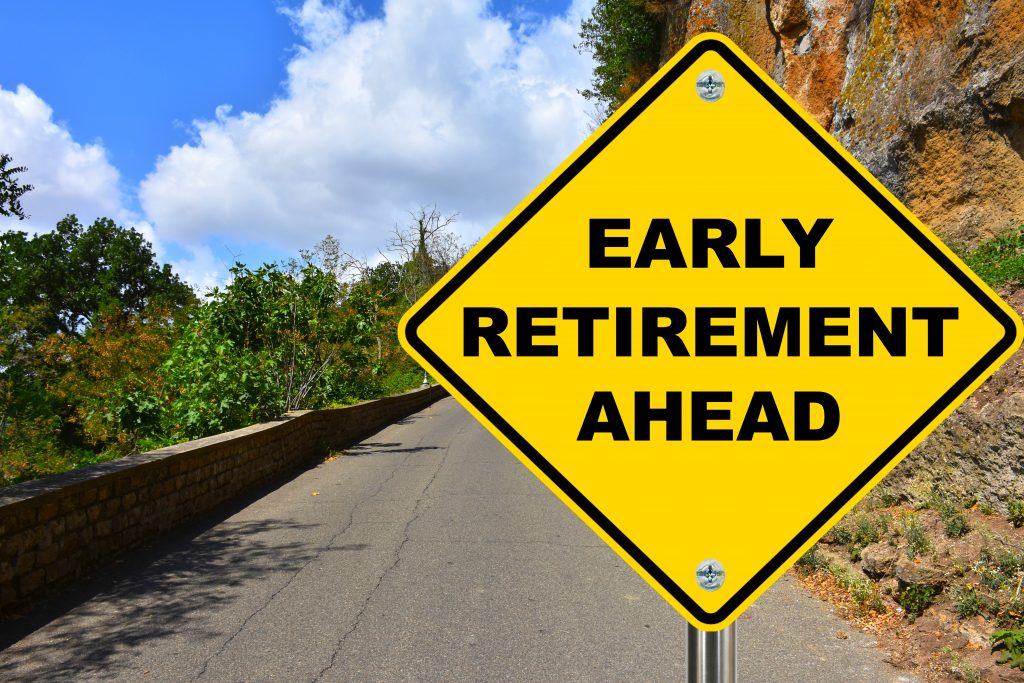You can also listen to this podcast on iono.fm here.
SIMON BROWN: I’m chatting with Nishlen Govender. He is a Citadel portfolio manager. Nishlen, appreciate the time today. Big Tech – Mag Seven, FAANGs, call them what we will – were having an absolutely rip-roaring time. Things started to weaken a bit last year.
This year I’ve actually decided to have a sqiz at some of them. They’ve bounced off the lows, but it really does help us understand that they might be titans of the economy but they are vulnerable to macroeconomic shocks, trade wars and and regulatory regulations.
NISHLEN GOVENDER: Yes. Hi, Simon. Hi to your listeners. It’s true. I wrote a piece about them amid the turmoil, so when they were at their lowest point. It’s nice to see them bouncing back now. I have to say, in the context of the turmoil my refrain was that the sell-off seems overdone in the context of how defensive these companies are inside our macro economies, as well as given the growth that they have that’s that sort of idiosyncratic of anything that’s happening globally.
So, if anything, I think it just shows that the market can sometimes be a little irrational. I’m very respectful of the market, but it can be a little irrational in selling things, especially when something seems to have gone up too much in the market’s opinion.
SIMON BROWN: And it’s that ‘too much’. It’s almost that a lot of folks are saying, ‘Oh, déjà vu’ to the dotcom. I remember the dotcom. I was a kid back then; I got caught up in the hype to a degree.
This is fundamentally different. To your point, these are giant businesses. These are in many cases – think of the likes of the Apple, the Microsoft. They have moats. This isn’t a dotcom where it really was, I don’t know, smoke and mirrors in many cases.
NISHLEN GOVENDER: Yes, that’s exactly the case. I think as humans we find comfort in comparing what we’re experiencing now with something we’ve experienced in the past. And when it comes to tech, I think enough of us have been burned by the dotcom bubble to go, hey, this feels a little bit like the same. But the companies, you are right, are fundamentally different.
During the dotcom bubble, we had no profits – let alone revenue – at the stage from a number of companies we were buying. Now you’ve got companies with significant moats, large cash balances, on their balance sheets. They’re important parts of our lives, already generating revenue from things like AI and data centres. So fundamentally different business models today.
SIMON BROWN: That is a fair point. And in many cases they’re actually not just profitable, but not even that expensive anymore. I’m thinking Nvidia. I first looked at it on an ATPE [average traded price]. That’s a very simplistic PE methodology, but it’s now sub-30. They’ve in many cases grown into the valuations.
NISHLEN GOVENDER: Exactly. I think we’ve become very used to looking at a PE number and thinking it might be too high. But with Nvidia the ‘P’ has actually gone higher. It’s the earnings that have come in the denominator to support it. It’s very, very true.
I think at the peak of this run that we’ve seen, which was in January this year, a couple of them did look expensive – your Apple for example, Tesla, Nvidia to a certain extent.
Where we’re sitting now, even after the bit of the rally that we’ve seen since the sort of calm of ‘Liberation Day’, companies like Microsoft, Amazon and Nvidia are still trading at a discount. I would call Nvidia fairly valued, but things like Amazon and Microsoft are trading at 10% discounts to their fair value. We’ve got Meta at a 15% discount of fair value. Apple is fairly valued. It’s very rare to find such high quality companies that are still growing at those kinds of valuations.
SIMON BROWN: And so critically important. You mentioned Microsoft – listeners will forgive me for quoting this again. Aside from their Azure, which is the cloud business, my annual subscription for my office has come along for renewal. They’re pushing the price up 30%, and I’m going to pay because what else am I going to do?
NISHLEN GOVENDER: Funny you say that. That’s kind of the refrain I say to people, because when I talk about AI or the data centre or the cloud, people often go, well, you’re talking about something that I’m never going to use. But when you make it tangible, you are paying for Office every single month. Many corporates – I’d call it most corporates – in South Africa are paying subscription revenues. They’re now taking on the Azure service to sort of bulletproof their businesses from a cloud perspective. That revenue is real, that revenue is growing and they definitely have pricing power. We think of the Seven Microsoft’s the best positioned just in terms of its ability to monetise everything related to AI, tech, and data centres inside our lives.
SIMON BROWN: And particularly in AI they are in sort of both sides; they’ve got the data centres, they’ve also got that deal with OpenAI.
Let’s stay with AI a second, because there are some challenges coming, perhaps specifically to Nvidia who really are at the heart of it. You kind of talk about in the Gold Rush buying the shovel maker. Nvidia is the chip maker [in] semiconductors. But they are seeing threat from China.
NISHLEN GOVENDER: If you’re talking about threat from China there are a couple of levels – because China’s got so good at what it does from a number of aspects that there’s a national security risk. So we saw restrictions on some of the Nvidia chips. That’s one risk to an investor’s portfolio, and we have seen Nvidia sell off a little bit because of that.
The other angle is the DeepSeek angle, where Chinese companies seem to be able to innovate differently. I have to say that that one is a little bit of a misnomer – in our opinion, at least. There was a lot of money spent to get DeepSeek to where it was. It did require a lot of Nvidia computing power, which I think just supports the Nvidia narrative. They may have done it in an inventive way, but the way the system works in terms of DeepSeek is you actually still need a lot of computing power.
So Nvidia, from the DeepSeek perspective, I think actually validates the story rather than hinders it. I think we’re more concerned now about the national security risk where certain countries might ring-fence companies and say, listen, you can’t do business in certain areas of the world. That’s something we haven’t seen for decades. So that’s brand new – and we are going to call it regulatory risk, I guess – and it is something that we need to sort of think about in the context of the next few years.
SIMON BROWN: You make a great point there. Let’s take DeepSeek. Sure, they certainly did some clever stuff, make no mistake about that. But in essence, if anything, they kind of legitimise artificial intelligence, prove its value – which again takes us to a degree to Nvidia, but also takes us back to Microsoft and Copilot, which they put into all of their office software. They’ve got the Azure, and it almost adds an extra tailwind to the giants out there.
NISHLEN GOVENDER: Yes, it’s 100% true. Everyone’s trying to make AI native to however we’re interacting with them. So WhatsApp now has an AI Chat that’s part of your list. If you go on to Twitter or X, there’s a Grok link as part of that that you can use quite comfortably. On an Android phone you can use Gemini quite easily, and Apple is kind of incorporating the same thing now.
It’s this arms race, where everyone wants you to start to be comfortable with their version of AI so that it becomes incorporated and adopted in your life. And all of it seems free for now, for most of us, but there will come a point where they will start to charge some sort of recurring revenue once you’ve embedded it in your lives.
So that’s the projection into profit that we see for these companies over the next couple of years.
SIMON BROWN: A last question. The last stock we haven’t touched on is Alphabet. They have obviously got cloud. They’ve got the Netflix monster within their stable. And then of course they’ve got Google itself. There’s a search engine.
Does AI threaten them and Search? I use Perplexity. I hardly ever go to Google anymore. Or do they use their AI and manage to come through this okay?
NISHLEN GOVENDER: Yes, that’s a good point. I think inside the complex of Google companies there are some very good businesses. If you think about YouTube, WayMore that sits in other beds, the Android operating system, they still generate too much of their revenue and profit from Search.
And you’re right, many people are not searching via Google like they used to, so it is a threat. I think Google has been ahead of the curve in AI development, even though they didn’t put out to customers. There are a number of examples online that you can sort of find on that.
So I think Google still has the development pedigree that they could come out with some very cool products. If your listeners want to check it out, there’s something called NotebookLM which Google has put out, and you can basically put any form of media into that and have a podcast created for you.
You could have summaries done, minutes done, you can ask questions. So I wouldn’t count Google out just yet, but of the six – I’ll exclude Tesla from this – Google has the biggest threat to its revenue, so it really needs to start working hard to generate that AI revenue and to be ahead of the rest of them.
SIMON BROWN: I will second that NotebookLM element. Apparently they’re going to be bringing video to it – I think later this month or maybe early June.
We’ll leave it there. Citadel portfolio manager Nishlen Govender, I appreciate the time.
Listen to the full MoneywebNOW podcast every weekday morning here.

 5 days ago
1
5 days ago
1






















 English (US) ·
English (US) ·